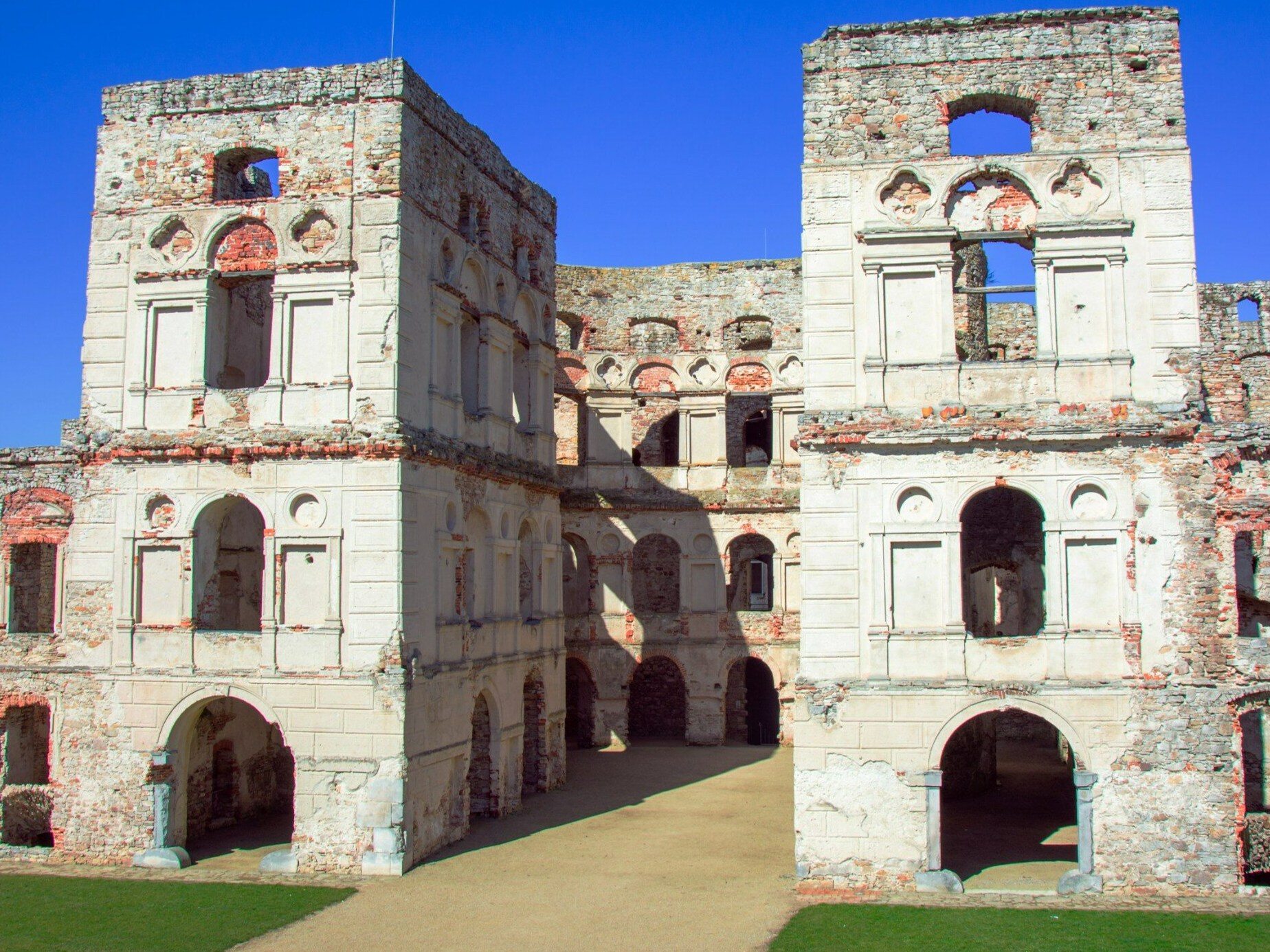7 most mysterious places in Poland. Discover them during the holidays

Are you looking for an idea for a holiday trip? Pay attention to less typical places than those that are usually crowded with tourists in Poland. On the map of our country there are mysterious tourist attractions, the visit of which also evokes a thrill.
Poland hides many unusual and mysterious nooks and crannies. Mysterious places of worship, hidden cities with an unobvious history, haunted castles, capricious mountain peaks or forests straight from the stories of Harry Potter – all these places can be found in our country. Which ones are the most mysterious? Here are 7 intriguing places to visit this summer.
The most mysterious places in Poland
Here are the 7 most mysterious places in Poland. They are perfect for a holiday getaway.
1. The Chapel of Skulls – a place for the brave
Three thousand skulls and human bones, tightly arranged next to each other, and about 20-30 thousand remains hidden in the crypt. This is how you can briefly describe the Skull Chapel in Czermna – one of the districts of Kudowa-Zdrój. The Baroque building from the turn of the 18th and 19th centuries is the only such place in Poland and one of only three in Europe. Its originator was Father Wacław Tomaszek, the parish priest of the local parish, who found human remains in the escarpment next to the church. They are victims of both armed conflicts and epidemics prevailing in these areas.
2. The Riese project – an underground city in Lower Silesia
The Owl Mountains hide many secrets. One of them is the Riese complex. Hidden under the Książ Castle, Walim, Jugowice Górne, Włodarz, Głuszyca, Osówka, Sokolec and Wielka Sowa, it ignites the imagination of tourists from all over Poland. The underground city was founded in 1943 at the behest of Adolf Hitler himself. Apparently, nearly 257 thousand. m3 concrete – more than in 1944 was used to build civilian shelters located in Germany. As much as 58 km of roads, 6 bridges, 100 km of pipelines and 213,000 buildings were made of this material. m3 tunnels. It is estimated that the whole project cost nearly 150 million marks, which is approximately EUR 500 million. This is the largest construction project of the Third Reich.
According to one theory, the city was to serve as one of many shelters for Hitler. Historians also speculate that V1 and V2 rockets and even nuclear weapons could have been produced in the huge halls. For years, the Riese complex has also ignited the imagination of the Golden Train trackers or the seekers of the Amber Room, which are said to be hidden somewhere in its nooks and crannies.
3. Babia Góra – the most capricious peak in Poland
The highest peak of the Beskids is for some the destination of expeditions and another stamp in the book of the conquerors of the Crown of Polish Mountains, and for others a place shrouded in legend. Witches’ sabbaths, magic orgies at its very top, and even the seat of the god of evil and war – Chernobog. These are just some of the superstitions associated with it. Still others believe that this peak sets devilish traps for all those who dream of setting foot on it (hence the second name Diablak). The local residents, in turn, say that malicious gnomes and … a black horse roam its paths. All legends and beliefs are fueled by puzzling accidents, like the crashed helicopter in 1963 or the plane crash that happened 6 years later. In both cases, the weather was beautiful and no technical faults were found in the machines.
4. The magic of the crooked forest
There is a forest in the vicinity of Nowe Czarnowo, just 4 kilometers from Gryfino (West Pomeranian Voivodeship). Surrounded by “ordinary” trees, there are several hundred pines with unusual, bent trunks. Exactly the same way and in the same direction – north. Why the trees in the forest, which currently has the status of a natural monument, look the way they do, remains a mystery to this day. According to some, it is a deliberate human action: German craftsmen wanting to obtain wood of the perfect shape for building boats or Soviet tanks. Another theory speaks of an ecological catastrophe.
5. Krzyżtopór – a castle made of a million chicken eggs
The ruins of the Krzyżtopór castle are located in Ujazd, near Sandomierz. Although these are only the remains of a once magnificent building, they are still visited by ghost hunters and numerology enthusiasts. The latter fascinated the initiator of the building – Krzysztof Ossoliński – the voivode of Sandomierz. In addition, an avid kabbalist and astrologer, and – interestingly – a devout Catholic who created this place with great attention to symbolism. The number of windows equals the number of days in a year. There are as many rooms here as there are weeks, and as many halls as there are months in the calendar. The number of towers, in turn, refers to the number of quarters. But that’s not all. Above the tower, behind the gate leading to the castle, there is a hieroglyph with the letter “W”, which means the eternal duration of a given place. The magical power of this sign is evidenced by the fact that 90% of buildings have survived on the land of Sandomierz since the 17th century.
The eccentric owner also placed a glass ceiling in one of the dining rooms, over which exotic fish swam, and covered the roof of the chapel with gold, which was produced by an alchemist employed by the voivode. It is worth mentioning that during the construction of the walls, egg whites were added to the mortar. Apparently, there were as many as a million of them! As in many castles, this one is supposedly haunted. According to legends, its founder still rules in the Krzyżtopór palace.
6. The Castle in Ryn – here haunts the Masurian spirit
Masuria is associated primarily with picturesque lakes, but there are also mysterious corners here. An example is the 14th-century castle in Ryn. Although there is now a luxury hotel here, according to legends, the spirit of the White Lady still rules there today. Under her figure hides Princess Anna, the wife of the Lithuanian prince Vytautas, who, together with her children, was walled up by the Teutonic Knights in the castle dungeons. Apparently, the apparition still appears to visitors to this day, but only to those of the male sex, showing them the way to the exit.
7. Kłomino – a ghost town
It is one of the most famous abandoned cities in Poland. Four barracks buildings, three blocks of flats, a canteen and a medical point – that’s all that’s left of the town of Kłomino, founded in the 1930s. The walls of the village, located about 10 km from the no less mysterious town of Borne Sulinowo (which for several decades was erased from the map of Poland as the seat of the Soviet army) hide a not very happy story, eagerly explored by urbex enthusiasts. Kłomino was once a German prisoner of war camp, and then a base of the Red Army. After the Polish administration took care of it, it was not possible to permanently settle it, and the attempt to sell the land was never successful.






